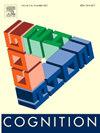从记忆中提取序列可以解释自然语言中递归结构的分布
IF 2.8
1区 心理学
Q1 PSYCHOLOGY, EXPERIMENTAL
引用次数: 0
摘要
语言在使用者的认知机制中运作。因此,语言结构很可能在认知约束的压力下进化(Christiansen &;蔡特,2008)。然而,如何准确地确定这是如何发生的,仍然是一个挑战。层次递归结构尤其难以与有限的认知特征联系起来。在这里,我们提出了一个新的认知解释,解释为什么中心嵌入递归结构的关系从句(如男孩A1狗A2追B2落B1) (A1A2B2B1)在数千种语言中普遍存在,而交叉依赖(CD)结构(A1A2B1B2)很少出现。CE语法的优势令人惊讶,因为它们可以产生比CD更远的依赖元素。我们认为这可以通过记忆检索机制与语言单词绑定操作(角色分配)相结合来解释。处理CE需要按反向顺序检索参考词,而CD需要按正向顺序检索参考词。我们首先指定了两个检索和绑定(R&;B)函数,从中我们从数学上推导出R&;B在向后召回(CE)下的性能优于前向召回(CD)下的性能。接下来,我们重新分析了一个研究回忆策略的现有数据集,并回顾了模仿句子处理条件下的顺序回忆策略的文献。重新分析验证了我们的预测,并表明向后回忆(CE)策略在与语言处理相关的条件下更优越。我们认为递归嵌入的生产能力在CE实例化中得到了最好的保存,因为内存机制最优地支持这种结构的处理,这可能解释了为什么CE在语言进化过程中盛行。本文章由计算机程序翻译,如有差异,请以英文原文为准。
Recalling sequences from memory can explain the distribution of recursive structures in natural languages
Language operates within the cognitive machinery of its users. Hence language structure is likely to evolve under the pressure of cognitive constraints (Christiansen & Chater, 2008). The challenge remains, however, in determining precisely how this may have occurred. Hierarchical recursive structures are especially difficult to relate to finite cognitive features. Here, we propose a new cognitive account explaining why Center Embedded recursive structures of relative clauses (as in The boy A1 the dog A2 chases B2 falls B1) (A1A2B2B1) are ubiquitous among thousands of languages, whereas Crossed-Dependent (CD) structures (A1A2B1B2) hardly ever occur. The preponderance of CE grammars is surprising considering they can produce dependent elements at longer distances than CD. We propose that this can be explained by memory retrieval mechanisms combined with linguistic word binding operations (role assignment). Processing CE requires the sequential retrieval of referent words in a backward direction, and CD in a forward direction. We first specify two Retrieval-and-Binding (R&B) functions, from which we derive mathematically that R&B performance under backwards recall (CE) exceeds performance under forward recall (CD). Next, we reanalyze an existing dataset that investigated strategies of recall and review the literature on sequential recall strategies under conditions that mimic sentence processing. The reanalysis verified the predictions of our account and showed that a backwards recall (CE) strategy is superior under conditions relevant to language processing. We suggest that the productive power of recursive embeddings is best conserved in a CE instantiation because memory mechanisms optimally support the processing of this structure, which might explain why CE has prevailed during language evolution.
求助全文
通过发布文献求助,成功后即可免费获取论文全文。
去求助
来源期刊

Cognition
PSYCHOLOGY, EXPERIMENTAL-
CiteScore
6.40
自引率
5.90%
发文量
283
期刊介绍:
Cognition is an international journal that publishes theoretical and experimental papers on the study of the mind. It covers a wide variety of subjects concerning all the different aspects of cognition, ranging from biological and experimental studies to formal analysis. Contributions from the fields of psychology, neuroscience, linguistics, computer science, mathematics, ethology and philosophy are welcome in this journal provided that they have some bearing on the functioning of the mind. In addition, the journal serves as a forum for discussion of social and political aspects of cognitive science.
 求助内容:
求助内容: 应助结果提醒方式:
应助结果提醒方式:


